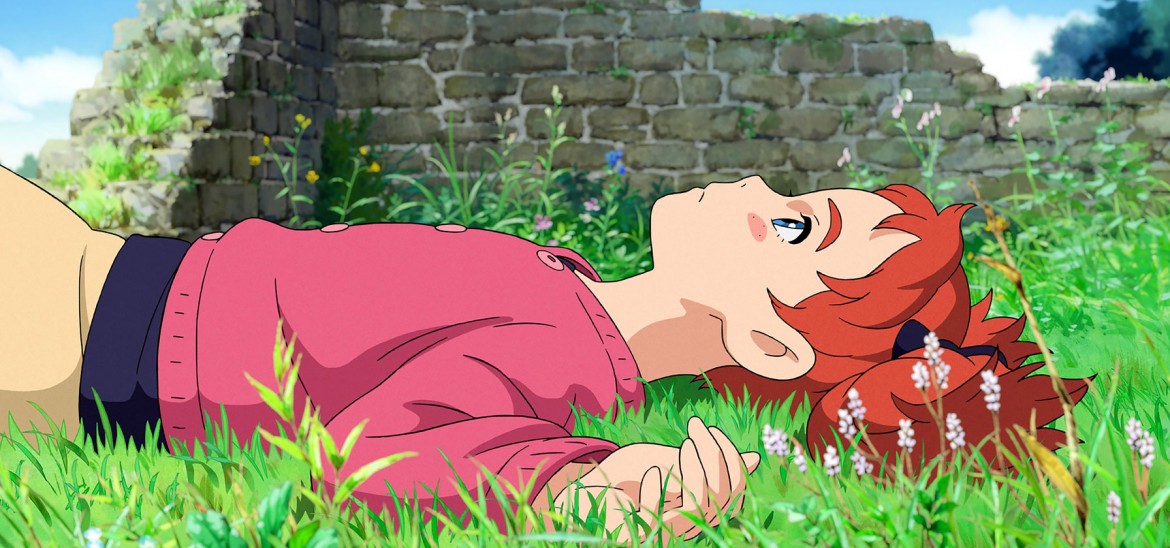Into Film Clubs
Find out everything you need to know about starting an Into Film Club.



Mary and the Witch's Flower is the first film from Studio Ponoc, a Japanese animation company based in Tokyo and founded by the former lead film producer of Studio Ghibli, Yoshiaki Nishimura.
Bridging the final days of Studio Ghibli and the birth of Studio Ponoc - by directing the final film for the former (When Marnie Was There) and the first film for the latter - is filmmaker Hiromasa Yonebayashi, who is joined on his journey by composer Takatsugu Muramatsu, as well as a number of key animators. Based on British writer Mary Stewart's 1971 children's novel The Little Broomstick, the anime tells the story of a young girl who finds a strange flower which blooms only once every seven years, and the incredible journey it takes her on.
Studio Ghibli were no strangers to putting their own spin on British children's books either - Japan was exposed to lots of foreign children's literature in the aftermath of World War Two - most recently in the case of Joan G. Robinson's When Marnie Was There. They also also made Mary Norton's The Borrowers into Arrietty as well as creating a version of Howl's Moving Castle (authored by Diana Wynne Jones) for the big screen. And when Hayao Miyazaki, Ghibli's most prominent director (Spirited Away, My Neighbour Totoro), produced a list of his fifty favourite children's books for an exhibition in 2010, the likes of Swallows and Amazons, Winnie-the-Pooh and The Wind in the Willows all made the cut, with the director declaring that "Britain is a treasure trove of children's authors" in a 1994 BBC interview.
In this film, Mary is living with her Great-Aunt Charlotte in the English countryside during the summer holidays but can't seem to make herself useful in any way. With no children her own age to play with aside from an impolite boy named Peter who makes fun of her red hair (which she already dislikes), Mary decides to create her own adventures. Following an eccentric cat into the forest, she stumbles upon the Fly-by-Night flower and an old broomstick. Together they come to life, whisking her off to a faraway land of wonder and intrigue, where she's introduced to a grand school known as Endor College. But as the secrets of the Hogwarts-like structure and its inhabitants are revealed to Mary, she realises that those around her - including Peter - may be in danger.
Much like the Ghibli classics, this film puts a young girl at the centre of its story and it's she who must rescue the boy, rather than the other way around. Studio Ghibli had female protagonists and strong female characters littered through their output, with the most natural link here being Kiki's Delivery Service. The two titles have a number of things in common, such as broomsticks, cats, magic and transitioning into new surroundings. Kiki is a young witch who must also leave her home for the first time, she strikes up a friendship with a boy of a similar age, and her pet cat Jiji assists her along her adventures. Both protagonists are curious, independent and strong-willed, though they have different challenges to deal with.
Mary and the Witch's Flower also shares plenty with the likes of Alice in Wonderland, Coraline and April and the Extraordinary World. All three of these are about young girls with a sense of curiosity who seek to discover and explore, despite the warnings of those around them. Each has its own distinctive visual style and all three are adaptations: Alice in Wonderland comes from Lewis Caroll's seminal text and its sequel; Coraline is based on the brilliant Neil Gaiman children's classic; and April and the Extraordinary World is a French film taken from a graphic novel.
But if these are all about learning more about the world and yourself, April and the Extraordinary World and Mary and the Witch's Flower share a further love of science. Mary's fears about the school are realised when she stumbles upon a secret chamber within the depths of its grounds which reveals the transformation experiments being performed on animals, and change is one of the film's key themes. Mary - voiced by Ruby Barnhill (who played Sophie in The BFG) in the dubbed English language version - must learn that while change is a necessary part of life to be embraced, there are some things which can't be changed.
When Mary first arrives at the school, she's thought to be a talented witch by its headmistress Madam Mumblechook, and the two embark on a whirlwind tour of the premises. This is one of the most impressive sequences in the film, as she gazes in wonder at the spells and enchantments being performed all around her. But Mary begins to think of herself as an imposter, and constantly worries that she'll be exposed as one. It's heartening then, that she joins what is becoming a long line of female-centric stories which emphasise strength of character and belief in yourself, particularly one which will please and charm the youngest Into Film members.
2018 has been a remarkable year for female protagonists in cinema, following the incredible box office success of blockbuster Wonder Woman last summer. We've already seen films as diverse as Steven Spielberg's The Post, foreign language Oscar® winner A Fantastic Woman and independent British drama Funny Cow presenting the world from a woman's point of view, amongst a whole host of others, including Greta Gerwig's celebrated coming-of-age directorial debut, Lady Bird. Cartoon Saloon's The Breadwinner is another animation putting gender at the centre of its story - from the studio behind Song of the Sea and The Secret of Kells - although the topics and issues it raises means it will be more relevant for a slightly older, teenage audience when it hits cinemas later this month.
After the relatively recent dissolution of Studio Ghibli and last month's sad news of its co-founder Isao Takahata's death, Studio Ponoc's first foray into animation is a timely release for a number of reasons, and promises a bright future to come. How fitting, then, that the studio takes its name after the Serbo-Croatian word "ponoć" meaning "midnight", signifying the start of a new day and, in this case - following on from the recent success of Your Name - ushering in an exciting new era for anime.
Our young reporter Aarony interviews Ruby Barnhill, who voices Mary in the dubbed English language version of the film, about her character's strengths, her favourite creatures, her ideal supernatural power and more.
Viewing 4 of 4 related items.

Get in touch with your article ideas for the News and Views section.